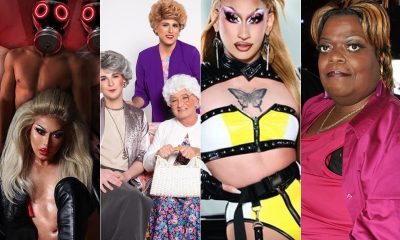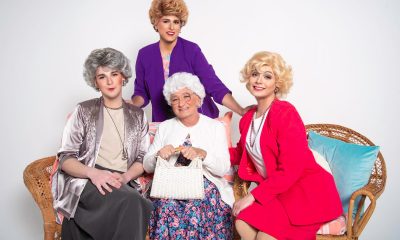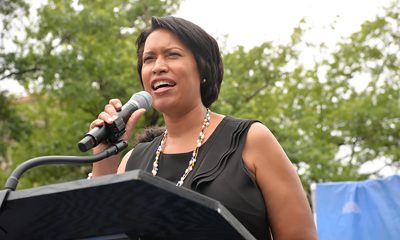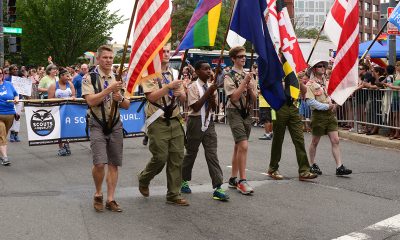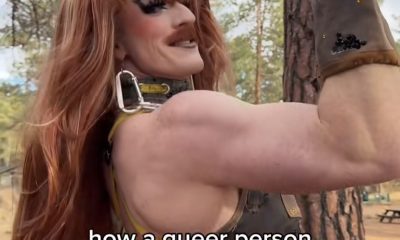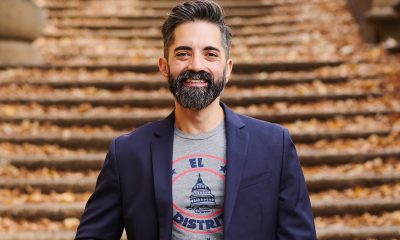Arts & Entertainment
Bea Arthur homeless shelter to open in 2017
following delays the building will begin operations in February
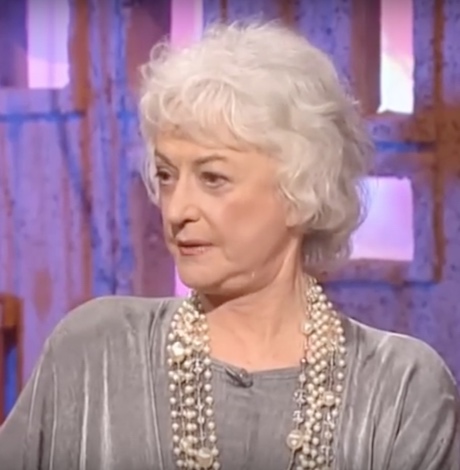
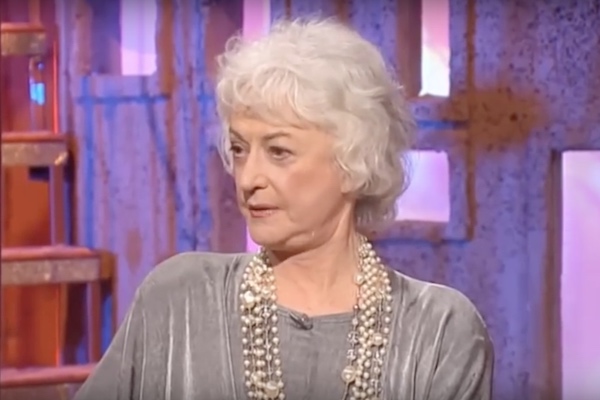
(Screenshot via YouTube)
“Golden Girls” star Bea Arthur’s estate will be funding a new LGBT homeless shelter in New York City to open in February 2017.
According to DNAInfo, Arthur left $300,000 in her will to the Ali Forney Center, a non-profit organization that supports LGBT youth. The money was used to help fund The Bea Arthur Residence, an 18-bed residence, which will be located in New York City’s East Village. In addition to housing the residence will provide case management services and on-site counseling.
Arthur, who died in 2009, was a long-time support of the Ali Forney Center. In a 2005 interview with Next Magazine Arthur spoke about her passion for the non-profit.
“These kids at the Ali Forney Center are literally dumped by their families because of the fact that they are lesbian, gay or transgender — this organization really is saving lives,” Arthur told Next Magazine.
Theater
D.C. theater scene has something for everyone this holiday season
‘Nutcracker,’ ‘A Christmas Carol,’ and much more
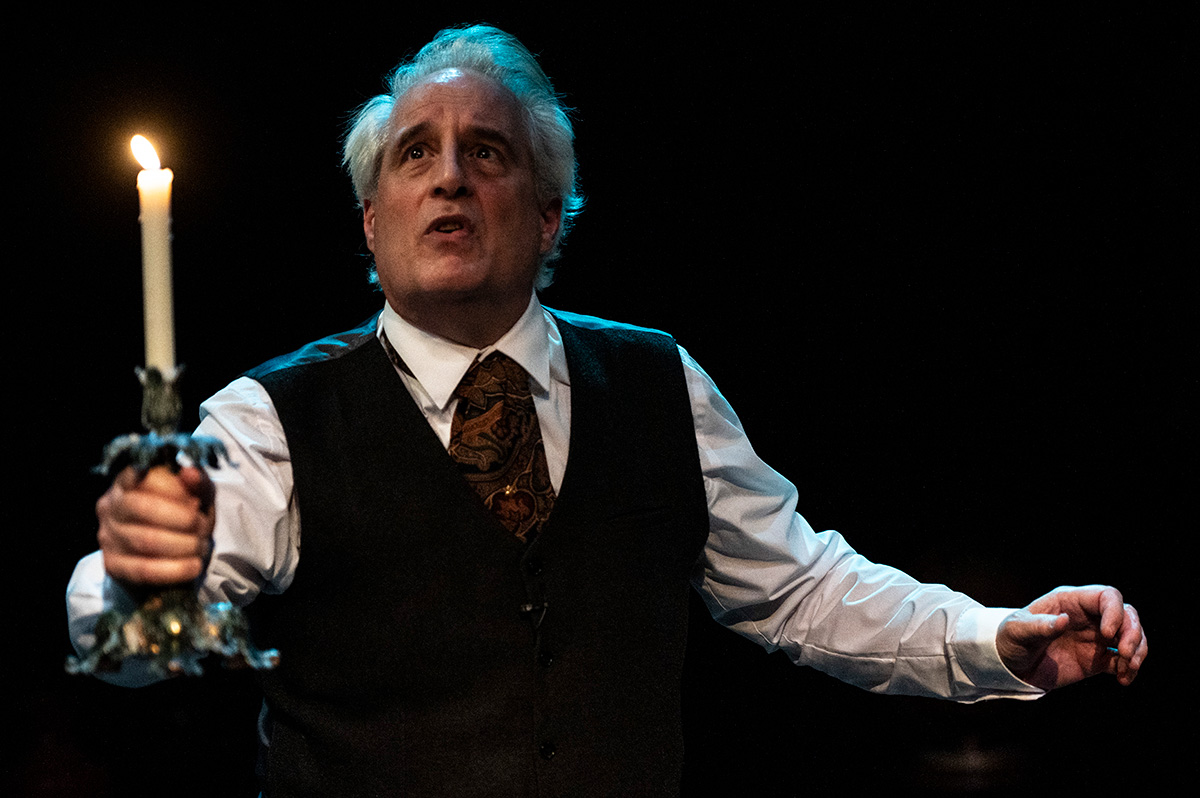
With its familiar music, yuletide imagery, and storytelling, theater can be a big part of the holidays. Add to that making memories and theater tickets wrapped as presents under the tree, and it’s a seasonal no brainer.
Folger Theatre presents “Resplendent Joy: Christmas Traditions from Spain and Portugal” (Dec. 5-14); the marvelous Folger Consort will perform early Spanish Christmas carols and traditional holiday music from early modern Spain and Portugal: folger.edu/resplendent
At Round House Theatre, playwright Sam Holcroft’s “Rules for Living” (Dec. 3-Jan. 4) makes its U.S. premiere. The darkly funny holiday comedy was a hit in London and is now hoping to repeat that success with a version tailored for the states. The seven-person cast includes versatile actors Naomi Jacobson and real-life spouse John Lescault. Ryan Rillette directs. roundhousetheatre.org
Theatre J presents “Chanukah in the Dark” (Dec. 6-21), an hour-long play ideal for ages five and up. “When the lights go out during Chanukah, Max and family begin sharing songs, stories, and traditions — only to discover the lights they needed and the miracles they searched for were in their midst all along.” edcjcc.org
The Cathedral Choral Society’s “Joy of Christmas” (Dec. 13-14) presents a wonderful program of carols and beloved holiday favorites at the festively decorated National Cathedral. The program features Seraph Brass, organist Edward Hewes, Carillonneur Edward M. Nassor, percussionist Mary La Blanc of “The President’s Own” U.S. Marine Band, and the Eastern Concert Choir from Eastern Senior High School. Cathedralchoralsociety.org
With “The Holiday Show,” (Dec. 13, 14, and 20), the Gay Men’s Chorus returns to entertain audiences with its annual and most popular show.
This year the holiday extravaganza is bigger than ever at historic Lincoln Theatre with new, soulful arrangements of favorite holiday carols: “The reindeer will be high-kicking and the snowflakes will sparkle. Songs include “O Holy Night,” “Rudolph the Red Nosed Reindeer,” “Let It Snow,” “We Wish You the Merriest,” and “Go Tell It on the Mountain.’” gmcw.org
At Olney’s intimate Mulitz-Gudelsky Theatre Lab, out actor Michael Russotto is back for the holiday season in his solo show “Christmas Carol: A Ghost Story of Christmas” (through Dec. 28). The talented Russotto portrays nearly 50 different characters from the Charles Dickens classic, that proves “funnier and far more relevant than you might imagine.” Olneytheatre.org
Also on holiday offer in the DMV are a jolly bunch of musical chestnuts as well as reliable Christmas crowd-pleasers.
Included on the roster is Olney Theatre’s production of Jerry Herman’s “Hello, Dolly!” (through Jan. 4) starring the mega-talented Nova Y. Payton. Based on the play “The Matchmaker” by famed gay playwright Thornton Wilder, the musical has proved a vehicle for many a diva including Carol Channing, Pearl Bailey, Bette Midler, and Barbra Streisand. Now Payton dons the mantle and the buzz is good.
Another beloved musical is “Fiddler on the Roof” (through Jan. 25), the story of Tevye, a poor Jewish milkman, his family and their tight-knit community who honor tradition while contending with pogroms in Czarist Russia. Currently being performed intimately in the round at Signature Theatre in Arlington and directed by Joe Calarco, the large cast features actors Douglas Sills, Chrisopher Bloch, and terrific out actor Jake Loewenthal as the poor tailor Motel Kamzoil, all singing Broadway favorites like “Sunrise, Sunset” “If I Were a Rich Man” and “Matchmaker.” sigtheatre.org
At Shakespeare Theatre Company’s Harman Hall is Frank Loesser’s “Guys and Dolls” (through Jan. 4). Based on tales from famed American journalist Damon Runyon, the show focuses on two overlapping love stories set in Depression-era Times Square. The terrific score includes songs like “Luck Be a Lady,” “Sit Down, You’re Rockin’ the Boat,” “A Bushel and a Peck,” and more songs you’ll know. Directed by Francesca Zambello and choreographed by Joshua Bergasse.
The cast includes Julie Benko, Lamont Brown, and Holly Twyford as General Matilda B. Cartwright, which is reason enough to buy a ticket. shakespearetheatre.org
And for hardcore traditionalists there’s the Washington Ballet’s “The Nutcracker” (through Dec. 29) with its balletic magic at the charming gilded Warner Theatre. The beloved production of Tchaikovsky’s ballet, here set in 1882 Georgetown, features a retinue of agile partiers, children, soldiers, rats, and notable figures from American history. washingtonballet.org
And last but hardly least, historic Ford’s Theatre presents “A Christmas Carol” (through Dec. 31), an enduring Washington tradition since I was youngish. Conceived by Michael Baron, this charming Dickens’ moneymaker again spotlights Craig Wallace as miserly Ebenezer Scrooge who after a night of ghostly visits, rediscovers Christmas joy. Fords.org
Drag
Pattie Gonia calls out Hegseth’s anti-LGBTQ policies — while doing better pull-ups
Drag queen Pattie Gonia uses a viral instagram video to call out Hegseth’s exclusionary policies while doubling down on activism for LGBTQ rights and the environment.
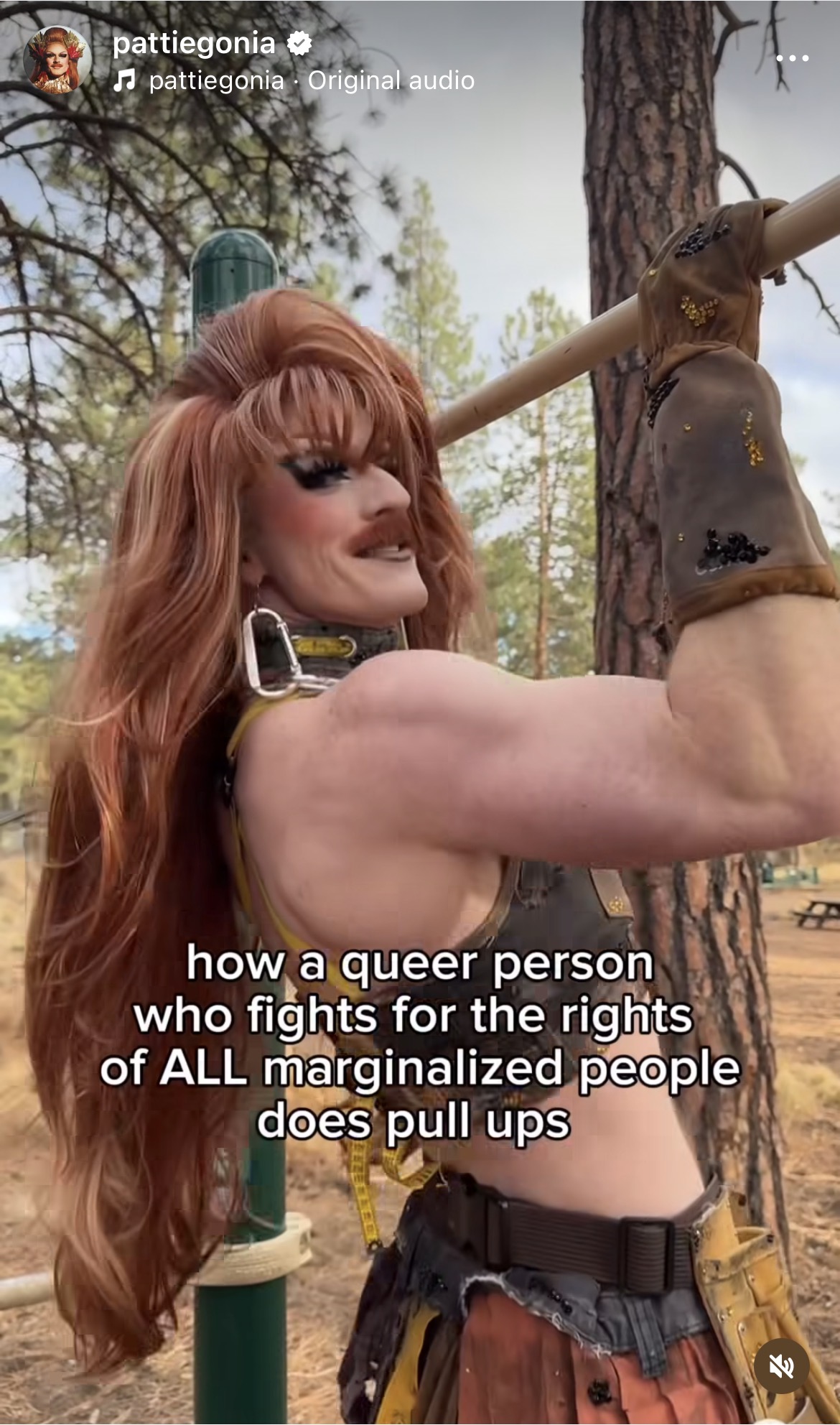
Drag queen and environmental activist Pattie Gonia has gone viral after posting a video last week calling out Defense Secretary Pete Hegseth — and doing so while knocking out a set of pull-ups with cleaner form than his own, all while in full drag. The clip is a direct response to a separate viral video Hegseth himself posted days earlier, in which he performed less-than-perfect pull-ups that drew widespread mockery online.
“Hi Pete Hegseth, Pattie Gonia here, while you’re busy trying to take away the rights of queer people, I’m over here advocating for the rights of all people, including my right to do better pull-ups than you all with my balls tucked inside of me,” she declares in the now-viral Instagram clip, delivering the message in full drag garb with the theatricality she’s known for.
The video lands at a moment when Hegseth’s record on LGBTQ rights continues to draw scrutiny. Since being appointed by President Trump to lead the Pentagon, the Defense Secretary has pushed the twice impeached president toward a series of exclusionary shifts inside the department.
Hegseth’s efforts have included pressing for the rollback of DEI measures, pausing all gender-affirming care for service members, and blocking promotions for personnel with “a history of gender dysphoria.” He has also openly stated that transgender people should not serve in the military and drew controversy for formally renaming a ship previously dedicated to Navy veteran and LGBTQ icon Harvey Milk to USNS Oscar V. Peterson. Hegseth has long criticized the repeal of “Don’t Ask Don’t Tell,” framing the policy change as harmful to the armed forces. And in October, he courted further backlash after suggesting women could be barred from military service altogether, arguing that the government would hold personnel to the “highest male standard.”
Pattie’s viral moment is only the latest in her growing portfolio of environmental and queer activism. In August, she joined a team of climbers in Yosemite, helping raise a massive 66-foot-wide trans flag across the iconic El Capitan wall — a striking symbol of trans visibility in one of the most storied national parks in the country. Her drag name even riffs on Patagonia, the famed South American mountain range, blending outdoor culture with camp.
Last week, Pattie Gonia also made a bold statement at the Out 100 award celebration in Los Angeles, wearing a dress crafted from the same trans flag flown at El Capitan in Yosemite National Park. She attended the event alongside non-binary NSP agent SJ Joslin who was fired for her role in helping put up the flag.
Since the beginning of her drag career, Pattie has steadily expanded her influence beyond the stage. She co-founded the Outdoorist Oath, a nonprofit dedicated to helping BIPOC, LGBTQIA+ people and femmes build community in the outdoors through education and shared stewardship. She also launched the Queer Outdoor and Environmental Job Board, a free resource that supports queer people seeking work in environmental and nature-based industries, with the aim of diversifying fields where LGBTQ representation remains limited. Her fundraising efforts have generated over $2.7 million for LGBTQIA+, Black, Indigenous, and People of Color (BIPOC), and environmental nonprofits, underscoring her ability to mobilize huge audiences toward collective action.
Her recent projects also include a national tour of her environmental drag show, “SAVE HER!”, which blends performance art with climate messaging, and the release of a documentary TV series, “Go Gently,” co-created with Harry Potter’s Bonnie Wright (Ginny Weasley). The series follows their journey from Los Angeles to Portland, Oregon, where they explore sustainable living and meet with communities protecting the Earth in innovative ways.
Photos
PHOTOS: Remove the Regime rally and march
Dropkick Murphys, Earth to Eve perform on steps of Lincoln Memorial
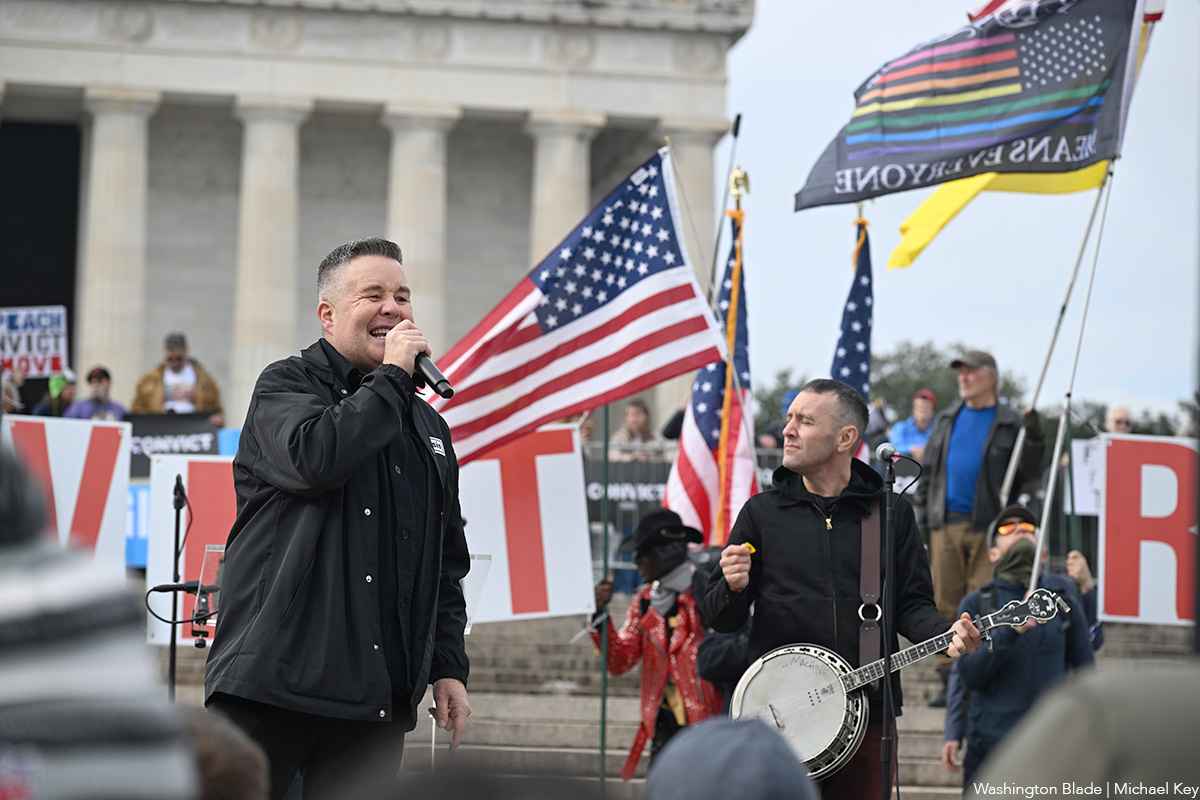
The Remove the Regime rally and march was held on Saturday, Nov. 22.
(Washington Blade photos by Michael Key)
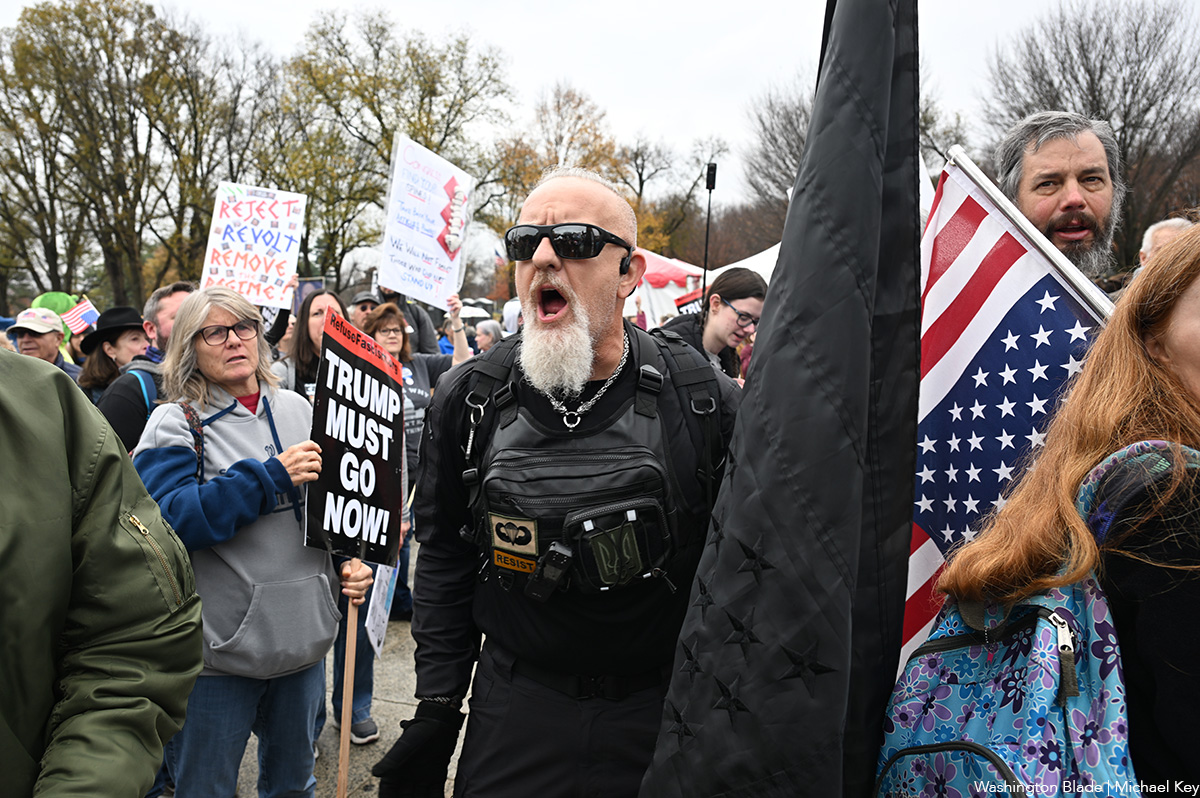
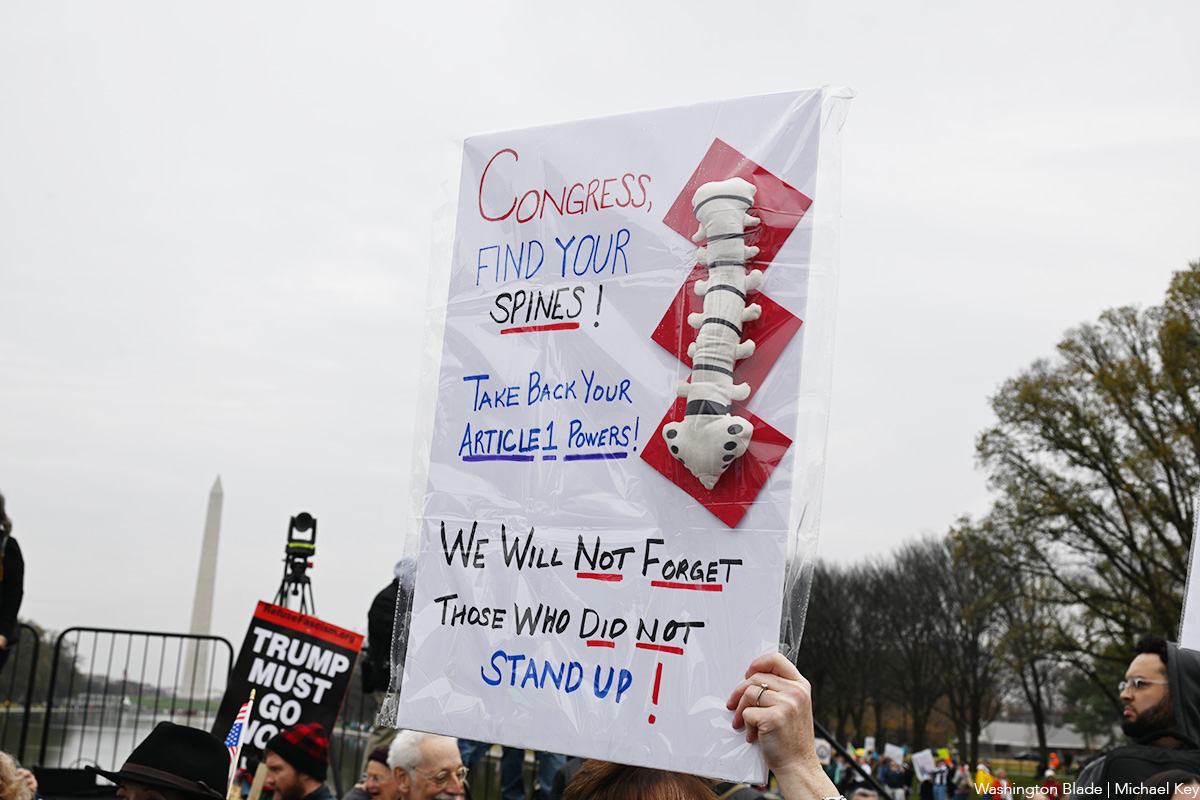
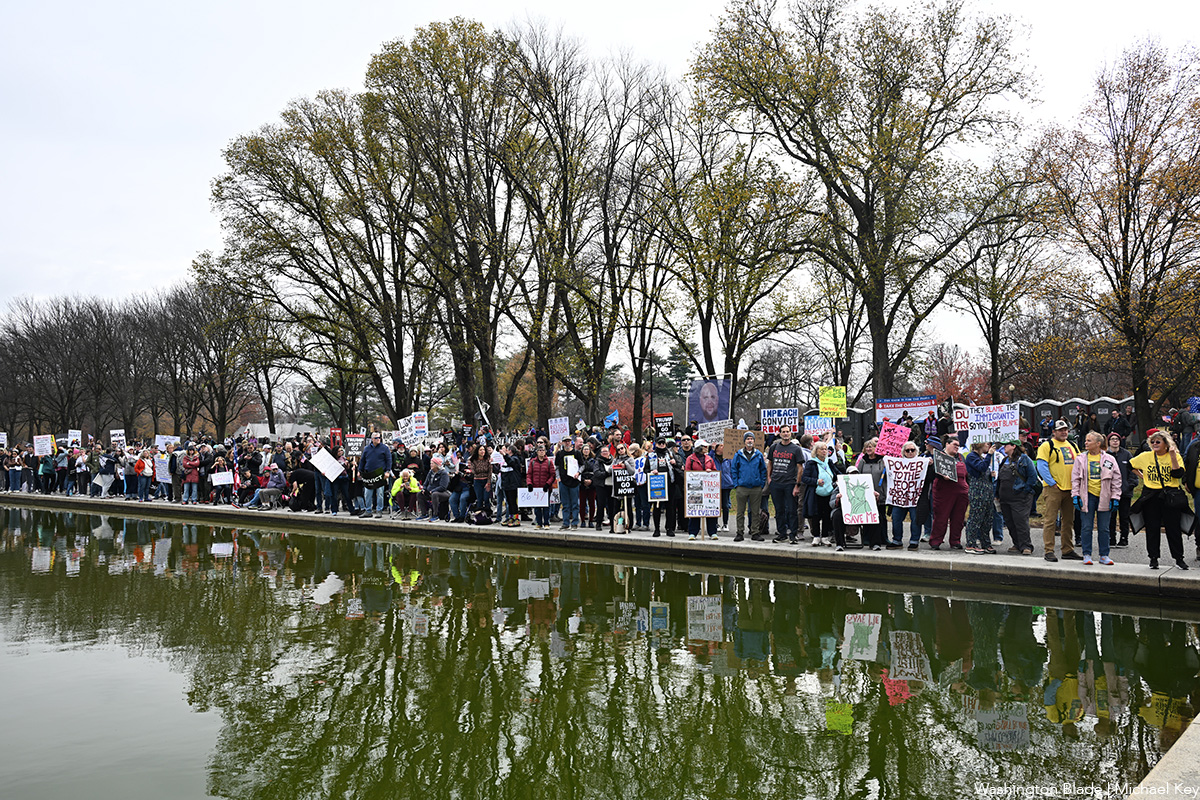
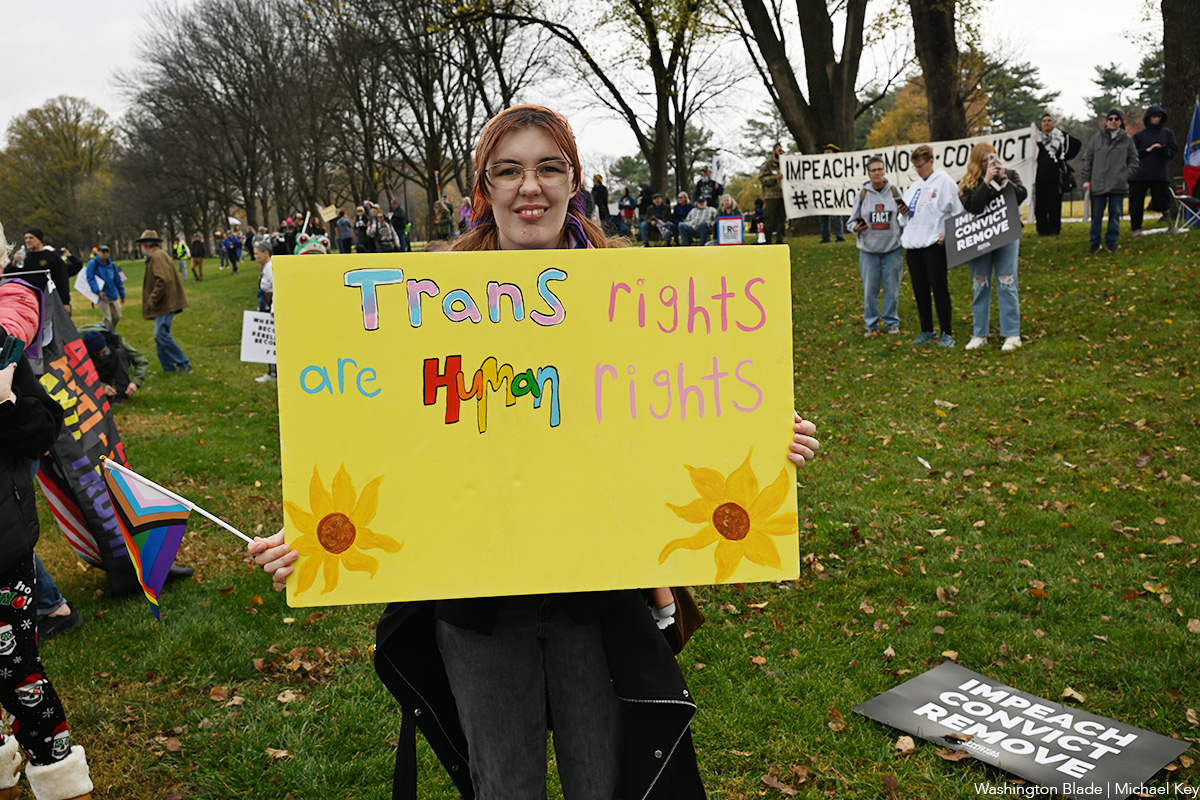
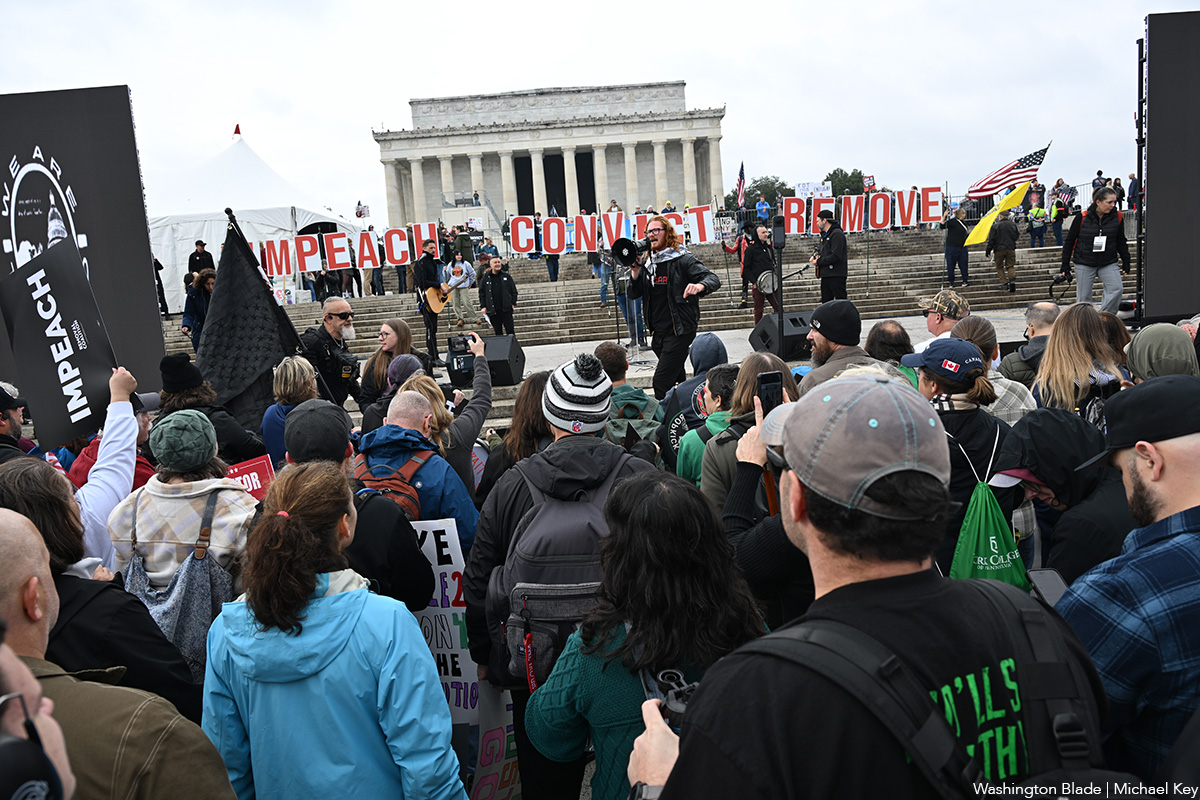
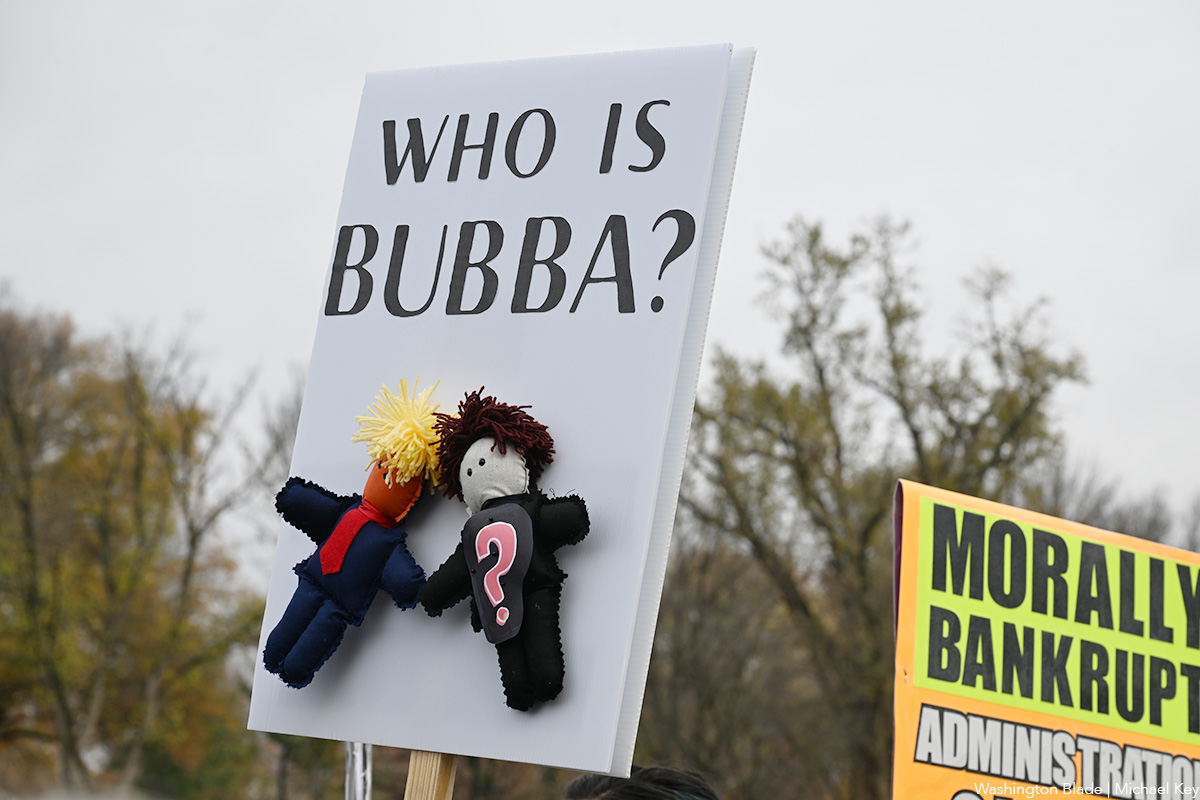
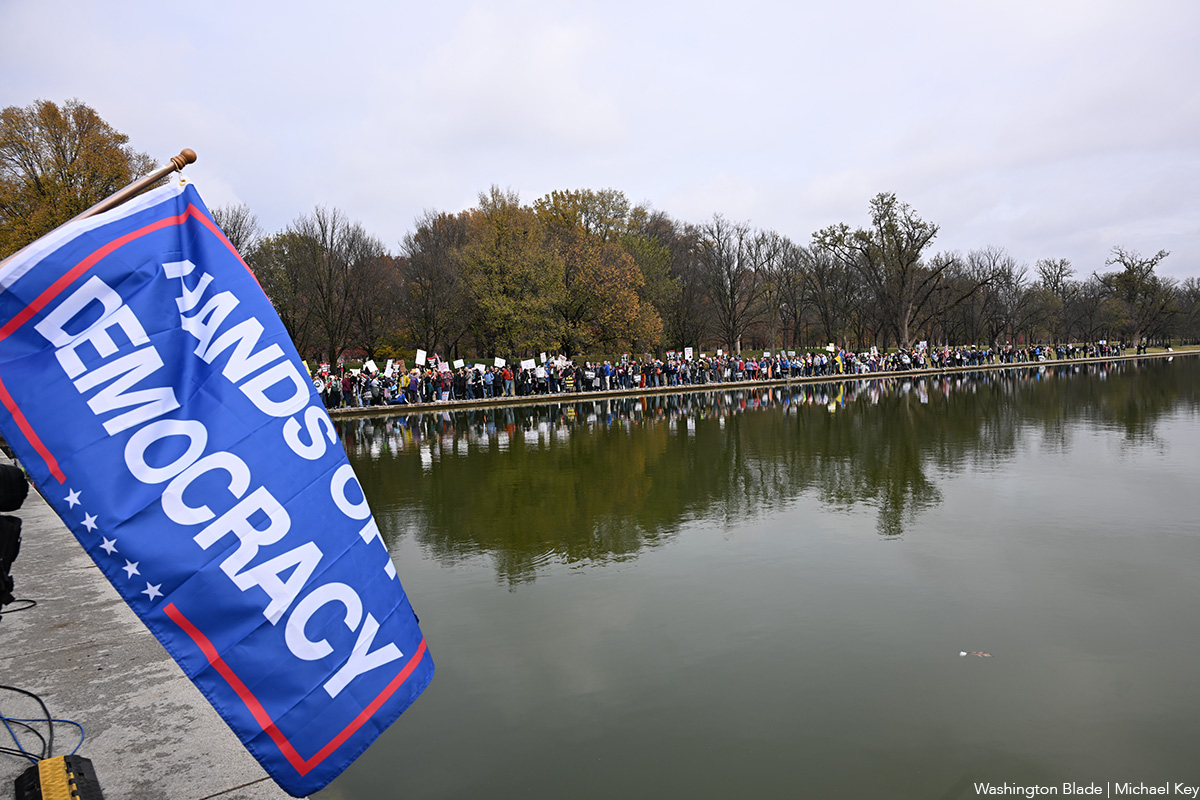
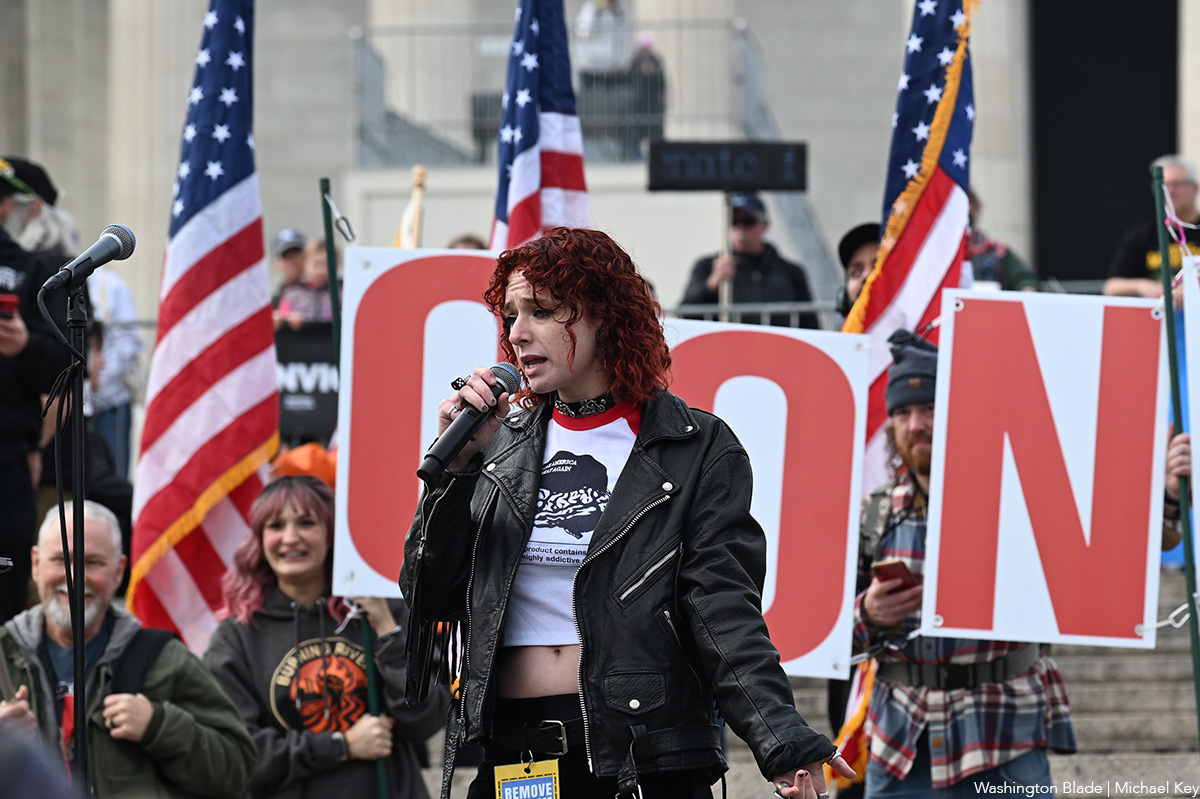
-

 District of Columbia2 days ago
District of Columbia2 days agoBowser announces she will not seek fourth term as mayor
-

 U.S. Military/Pentagon3 days ago
U.S. Military/Pentagon3 days agoPentagon moves to break with Boy Scouts over LGBTQ and gender inclusion
-

 Drag3 days ago
Drag3 days agoPattie Gonia calls out Hegseth’s anti-LGBTQ policies — while doing better pull-ups
-

 District of Columbia4 days ago
District of Columbia4 days agoSecond gay candidate announces run for Ward 1 D.C. Council seat



